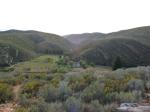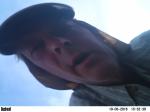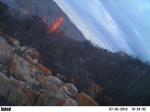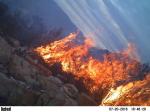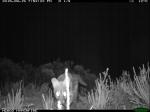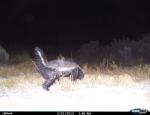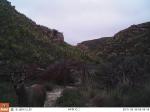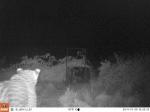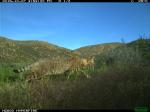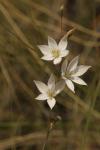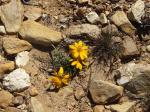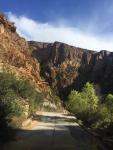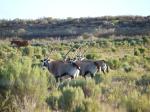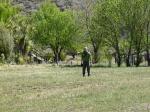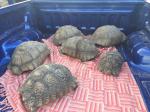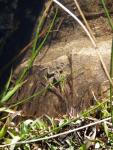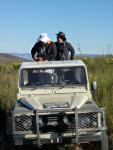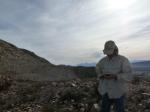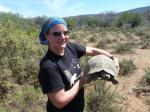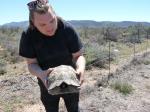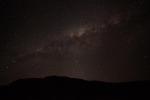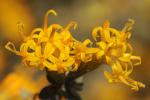That’s all folks. Our time on expedition has come to an end. Our volunteers have departed, the kit is packed and now Alan and I must head our separate ways. First we must convoy south to return our Ford Rangers (thank you again Ford South Africa!). I then have to make the migration north to Scotland, and Alan to Senegal to present some of his research. The science never stops!
I can hardly believe our second expedition in South Africa is already over. Let me start by thanking our team. First off, our volunteers; the joy of expeditions is working with a bunch of liked-minded people towards a common goal – we’ve had a fantastic group and you’ve all made a great contribution (which I’ll expand on in a moment). But firstly we owe a huge thank you to Melda and Gurli, for the continual provision of culinary delights, and their botanical wisdom! We would also like to thank the extended Lee family (Anja, Elli, Charlie, Chris & Elaine) for their boundless hospitality. And finally, our enormous collective thanks go to Alan, our leader in all things scientific. It has again been a fantastic privilege to share in your world and work with such a passionate scientist.
So what about that contribution I mentioned? Well, the stats are staggering, over 50 litres of wine drunk, in excess 130 chocolate bars eaten, and numerous cups of tea and coffee consumed, and we still managed to complete all the fieldwork. Of course data still need to be crunched from the various field surveys and just think of all those new camera traps still clicking and collecting data….long beyond our departure.
But in case you have forgotten, here are just some of our highlights:
Several new camera traps have been deployed across the Blue Hill area (and many others serviced) to monitor leopard, caracal and other mammal activity and movement patterns.
Nearly 3000 camera images from Blue Hill have be analysed, identified and catalogued, revealing activity of leopards, caracals and African wildcats across a number of locations.
Over 20 kms of flush transects surveys have been completed across the Blue Hill area.
Several mist netting surveys have been completed providing more data on several endemic and range-restricted bird species.
We completed yet another round of small mammal trapping surveys.
We identified the location of more Cape rockjumper nests (a bird endemic to the Fynbos).
We have identified at least another two new species of bat in the research area (bringing the total to seve) and additional cave roosts of the Cape horseshoe bat have been identified.
The team have contributed to pioneering and ongoing research of Matt Macray into the impact of electric fences on tortoise species. This is going to be a ground-breaking study highlighting the devastating impacts on a species, which poses no threat to any other animal.
And finally, the Hottentot buttonquail……
Alan has been catching and ringing birds at Blue Hill since 2011, and in that time he has caught over 7,000 birds but not a single Hottentot buttonquail. But neither has anyone else caught one, ever, anywhere. Biosphere Expeditions volunteers have been instrumental in changing that, and helping to influence our understanding of this endangered, range-restricted fynbos endemic bird.

Andrew to the tortoise rescue

Another day in the office

Another survey location

Cape weaver

Checking the nets

Data entry

Deploying a bat detector

Fieldwork is hardwork

Floral kingdom

Floral kingdom

Floral kingdom

Hottentot buttonquail

Jim taking in the view

Setting a camera trap

The lucky ones

The expedition team

The unlucky ones
No matter whether you are a volunteer, scientist or expedition leader, we all go on expeditions with a varying mix of nerves, hope and expectation. We never know what we will achieve and I certainly don’t expect a ‘world first’, but in the diminutive shape of the Hottentot buttonquail, that is exactly what this team has achieved. Who would have thought that was possible when you are just going away for a couple of weeks?
Be pleased, be proud and I look forward to being back next year.
Best wishes
Craig Turner
Expedition leader
From our working holiday volunteering with leopards, caracals and Cape biodiversity in South Africa.





